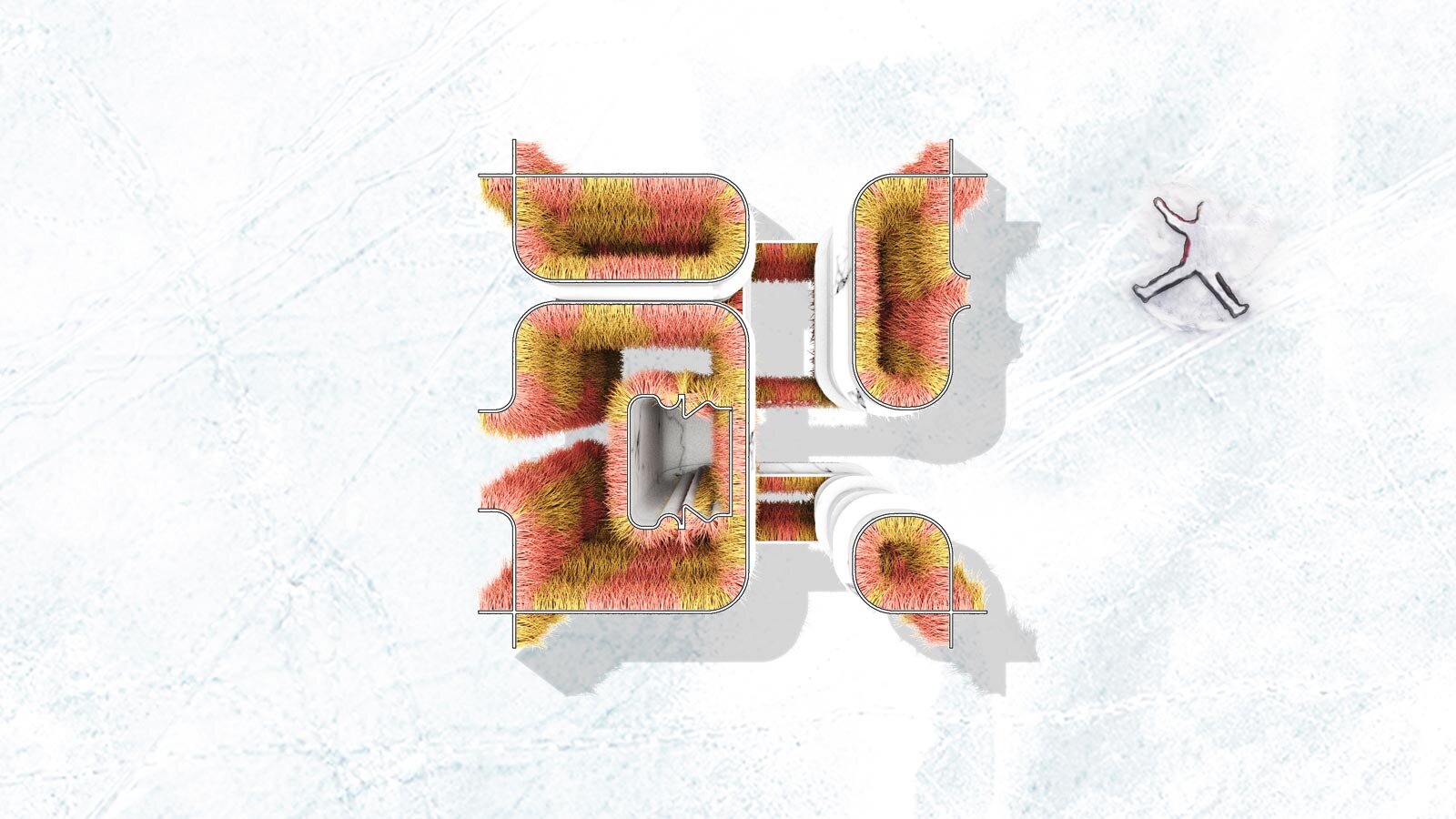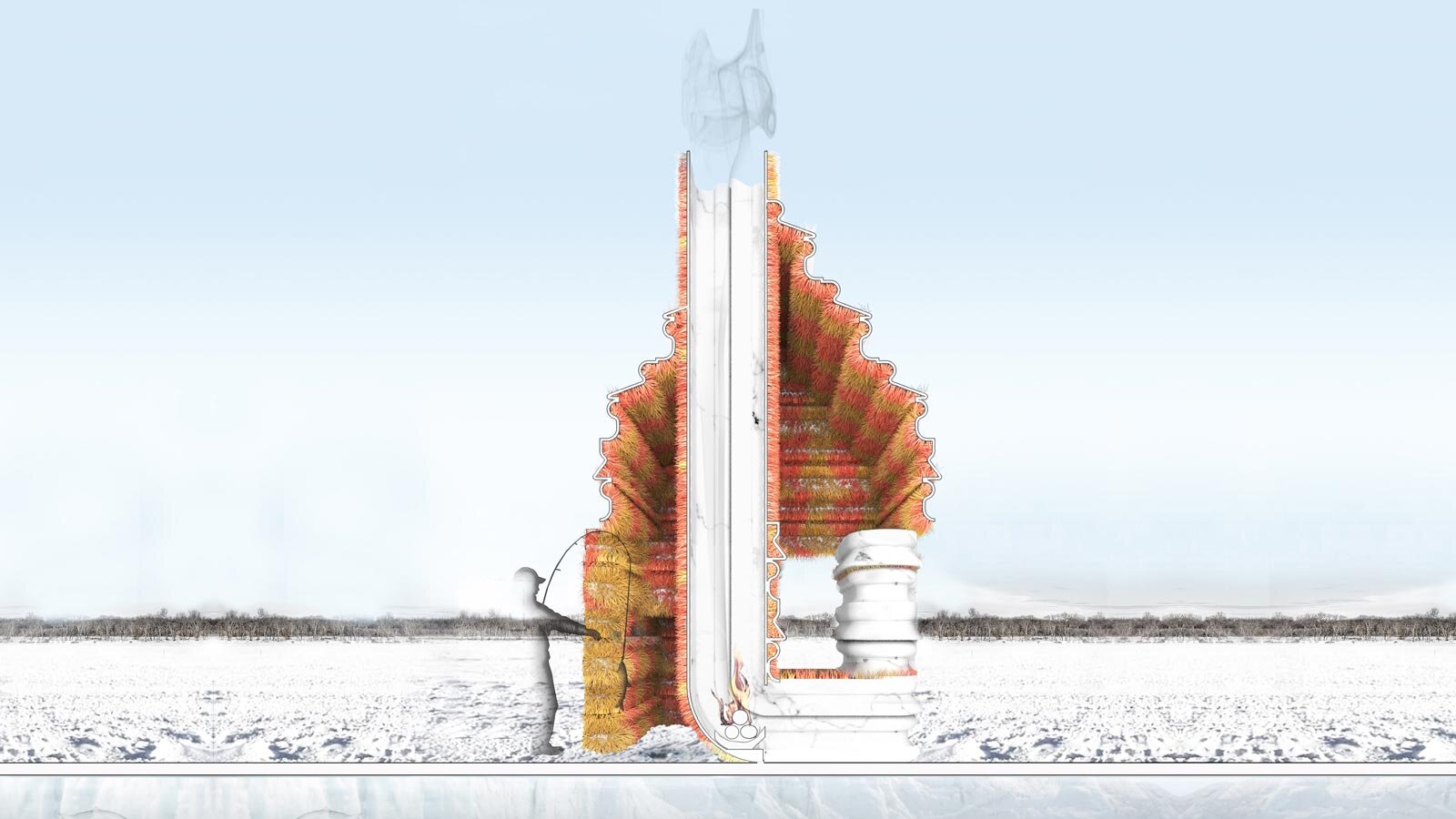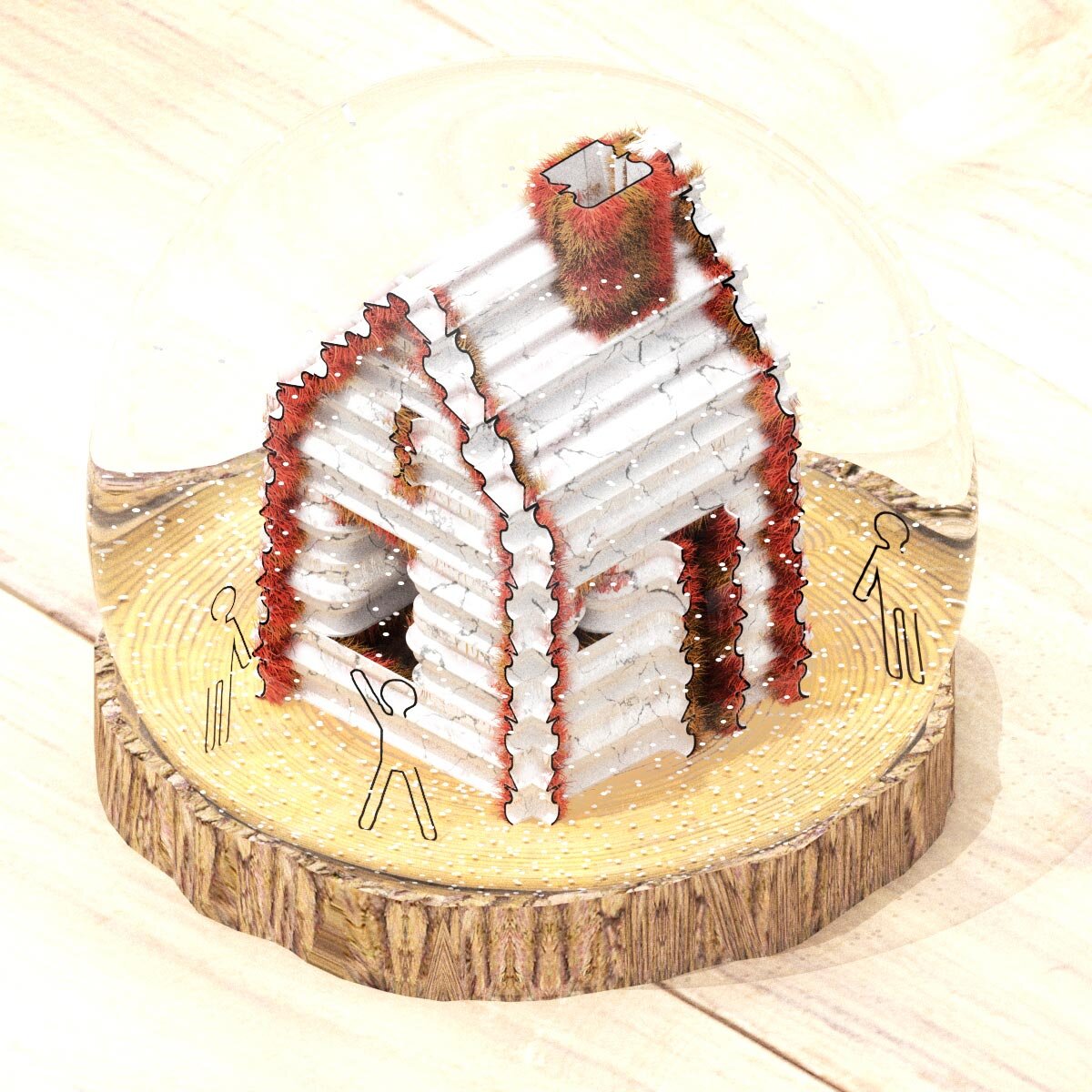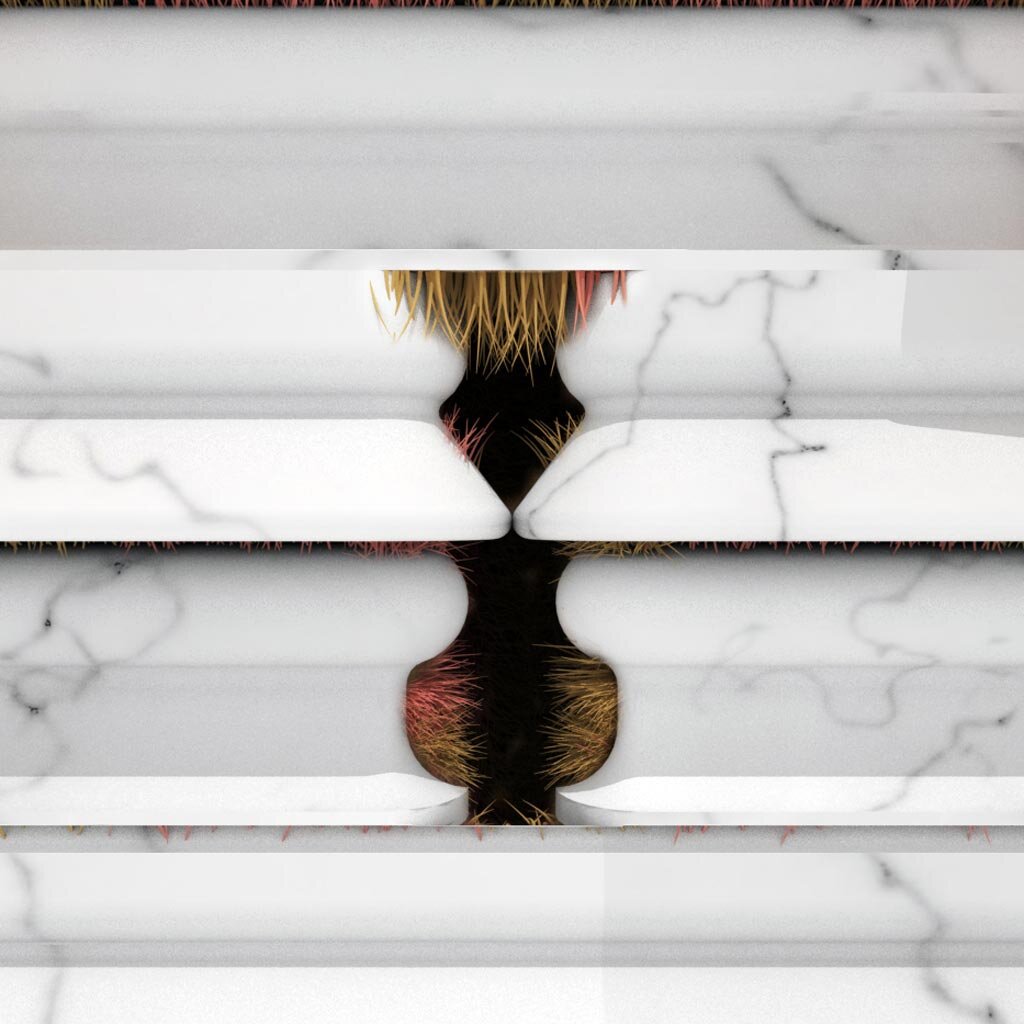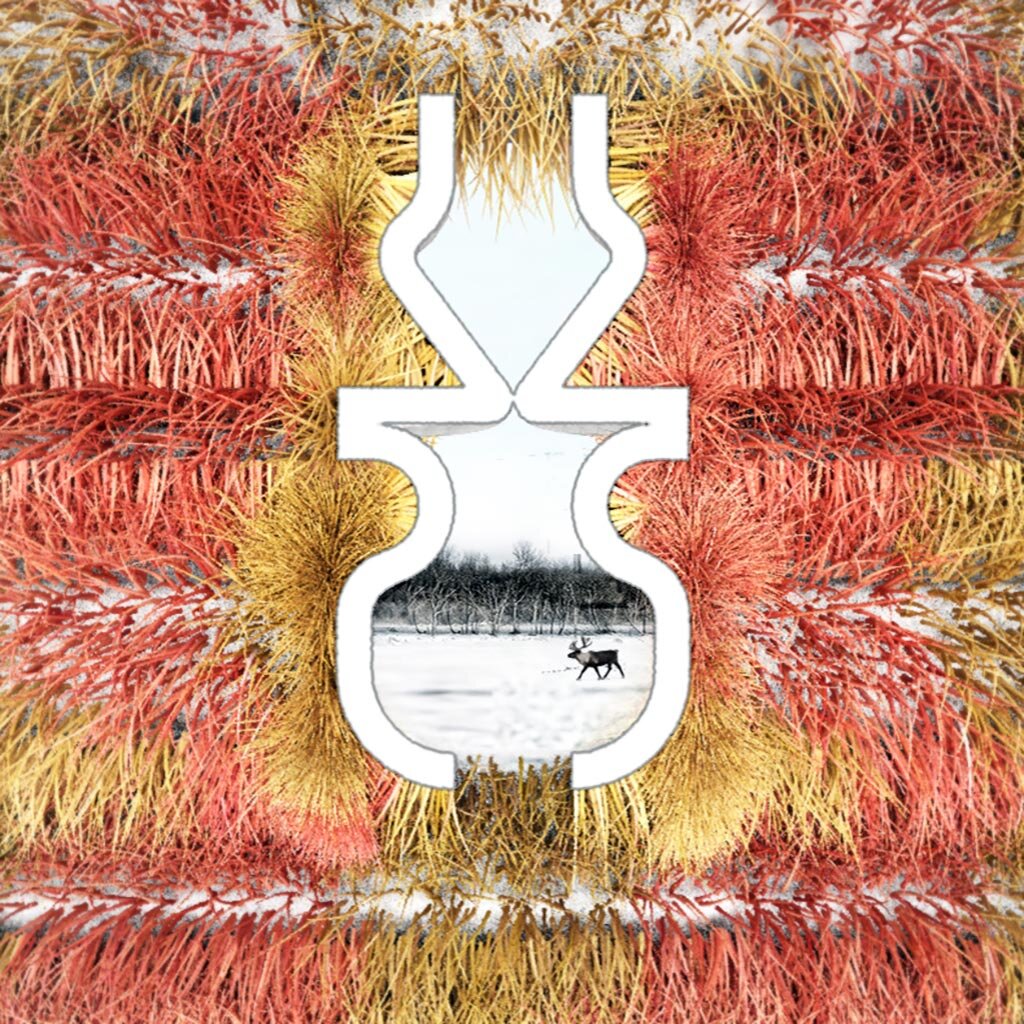To examine the profile’s agency, our collaborative practice explored the problematic of part to whole through the development of a log cabin, responding to a prompt for a small pavilion in a northern climate. Distinguished by its silhouette, the log cabin serves as an archetypal case study whereby its image, or holistic figure — emblematic for instance of homesteading or frontier — is defined by the composition and assembly of its parts: a conventional stereotomic construction employing the cutting, notching and stacking of saw milled lumber of regular semicircular profile extrusions. Similar to a cornice or moulding, the tectonic assemblage of stacked timber is rendered solid, where the negative corrugation between each log distinguishes the cabin’s reading (Figure 2). By exploring the formal, spatial, and material consequences of the log’s profile, Profilog Cabin considers the perceived relationship between the cabin’s typological silhouette and its associated recognition through translation and aggregation of the profilog.
/ Diagrams
As a construct, the geometry and representation of the profilog establish a multifaceted identity of various readings between shape and volume, material and surface. Translating the repeated radial curvature of a conventional log, the profilog augments the figure of saw milled timber and its axial composition. Compound curvature proportions according to the facial profile in the syntactic tradition of Scamozzi and Blondel. Each log is cast of lightweight fiber reinforced concrete recalling concrete’s historic role as a compressive material, in contrast to contemporary use in adorning the face of a building as a rainscreen panel or classical moulding. The profilog further engages the textual definition of profile’s etymology, arising from the Italian roots pro filo, “to spin forth”. Strung with burnt mohair as expressed on the exterior, the interior face is insulated by an inlay of mohair tapestry patterned in the dichromatic projection of frontal and side facial profiles across the corrugated surface of each extrusion, creating coincidental readings through profile curvature.
/ Drawings
As with the stacked log in the assembly of a stereotomic wall, or a cornice in its striated definition of interiority, the profilog performs both tectonically and formally through the double function of log structure and moulding frame, characterizing exterior shape and interior volume. Employing three-dimensional translation of profile extrusion plus revolution and two-dimensional projection, localized readings of curvature are conflated and confounded through gestalt interpretation, interference, and double readings — a Janus, a totem, a kiss, and a vase. The result is a Klein bottle log cabin, characterized by the double-sided nature of the figural profile, collectively questioning the profile’s capacity to augment and transform the perceptual reading of a recognizable whole, through volume, shape, surface, and material.
/ Images
/ Project Team
Jonathan A. Scelsa, John Paul Rysavy, & Jenna Dezinski
/ Project Info
/ Project Type - Folly
/ Location - Winter Wonderland
/ Status - Design Competition
/ Project Date - 2017





